Why climate change is essentially not a prisoner’s dilemma.
A reflection on the area under the curve, non-linearity and decoupling growth.
Throughout childhood, German children are being taught a phrase of Austrian writer Marie von Ebner-Eschenbach “Der Klügere gibt nach”, which in English translates to “The cleverer gives in”. Small children stopping abruptly in the heat of a discussion and proclaiming with a feeling of pride and superiority that they will give in as the cleverer one, is not an uncommon scenario. With COP 21, the 2015 United Nations Climate Change Conference, impending, we need to question why it is that “giving in” is generally seen as a sign of defeat and not of superiority in global politics regarding climate change. Why do countries tend to excuse their lack of action with the performance of other countries?
Many turn to game theory to analyse this common problem of combatting climate change, calling it the ultimate prisoner’s dilemma. Prisoner’s dilemma explain why under certain circumstances competition will be chosen over cooperation even if it leads to a less favourable outcome for the parties involved. The dilemma is characterised by a situation where cooperation leads to the highest communal reward or the lowest punishment respectively. However, if one party cooperates and the other one defects, the defecting party will receive a higher reward than for cooperating. The lonely cooperator on the other hand will face the highest punishment. This forces “rationally” acting parties to defect, but with both parties defecting the lowest communal reward or the highest communal punishment will be achieved.
What does this imply for climate change? Without doubt, it is the best solution for all countries to jointly commit to reduce emissions in order to combat climate change. Nonetheless, it is widely believed that reducing emissions is equivalent to lower economic growth. Thus, continuing to pollute while others reduce emissions will create a competitive advantage for the still polluting party.
Referring back to the saying of Marie von Ebner-Eschenbach, the prisoner’s dilemma’s gives us a sound explanation of why “giving in” is so difficult for many countries when it comes to climate change. Rationality regarding payoffs and the resulting competitive advantage will induce parties to continue polluting. However, we should question the ability of the prisoner’s dilemma to adequately model the reality of climate change. It is a one-time game simulating a complex long-term problem. Allowing for other influences and a long-term vision, could completely alter the prisoner’s dilemma payoff structure, ultimately resulting in “giving in” as the most rational choice.
In the following, I want to introduce three different (non-exclusive) aspects that could be able to change the payoff structure and challenge the existence of a prisoner’s dilemma.
1. The area under the graph
In the Cancun Climate Change Conference in November 2010, participating parties agreed to commit to a maximum temperature rise of 2 degrees Celsius above pre-industrial levels. So far, intended nationally determined contributions (INDC) of COP participants lead to a 50% chance of causing an increase in global temperature of 2,7°C or higher. However, a factor that is often neglected in this discussion, is the importance of the cumulative nature of most greenhouse gases. Global warming is a result of the sum of all emitted greenhouse gases calculated over centuries. This shows us that solely defining a temperature goal is not sufficient when it comes to climate change. The crucial aspect is the trajectory and implicitly the area under graph of CO2 emissions, called the carbon budget. Currently, we are on the verge of entering the trajectory to a global warming of about 4°C by 2100. The consequences of this will be severe and could let us all face problems such as climate refugees and global food insecurity. With this in mind, can polluting still be considered a long-term competitive advantage from an economic point of view?
2. Thresholds in ecosystems
Another fallacy regarding climate change is the assumption of linearity of climate change impacts. Linearity is refuted by research, which shows that ecosystems have different stable states that are confined by thresholds. Once a threshold is passed, there is no gradual conversion to the other state, but an abrupt and sometimes even irreversible change. In collaboration with 27 internationally renowned scientists, Johan Rockström, the executive director of the Stockholm Resilience Centre, determined nine planetary boundaries “within which humanity can continue to develop and thrive for generations to come.” One of these nine boundaries is determined by climate change and according to scientists’ calculations we have already entered the zone of uncertainty with increased risk. Taking this into account, the payoff structure of “A and B polluting” must display the highest individual and communal punishment. However, the exact level of punishment is hardly determinable due to the uncertainty regarding thresholds and the possibility of irreversibility.
3. Decoupling growth and emissions
Finally, we should not only consider worst case scenarios affecting the payoffs in the prisoner’s dilemma model, but also acknowledge positive developments. A study by German Heinrich Böll Foundation and DIW Econ has shown that Germany and other OECD countries already started to strongly decouple their economic growth from energy consumption and greenhouse gas emissions during the last years. Incorporating this into potential game payoffs, it would mean that the individual reward for defecting while the other party is cooperating does not necessarily need to be lower than the individual reward if both parties cooperate.
Based on the introduction of these three factors, we can define a new payoff structure for the assumed prisoner’s dilemma. Considering a long-term strategy vision, payoffs are more realistic to be similar to the following graphic:
In a situation where both parties continue polluting, the risk of reaching the threshold of the climate change boundary is very high and payoffs are due to the non-linearity of change not determinable, but the punishment is without doubt the highest for this game.
If one party stops and the other party continues polluting, the defecting party could have a competitive advantage over the cooperating party. However, we are already on the 4°C trajectory, which means that if not all the countries start reducing now, we will still face threats by issues such as food insecurity and climate refugees. These will be global problems that will affect all countries. Therefore, the reward for one party defecting cannot generally be higher than for both parties cooperating despite the alleged competitive advantage.
Taking into account that there are signs of decoupling growth and emissions, but that the extent of decoupling is different for varying countries, the payoffs for both parties cutting emissions should be displayed as a range with the lowest payoff equivalent to the scenario of one party defecting.
The resulting payoff structure is essentially not a prisoner’s dilemma anymore as the dominant and rational strategy will lead to cooperative behaviour and hence a reduction of emissions. Against the presented background of potential future climate disasters, crucial thresholds of ecosystems and the ability to decouple growth from emissions we need stop associating emission reductions with an economic recession. We should acknowledge the fact that not acting now will ultimately result in a far bigger economic problem, opening the pathway to a potentially irreversible global crisis. It seems about time to remember our childish sense of superiority when giving in. COP 21 gives us another opportunity to finally do so and to — proudly — consider cooperation for below 2°C our global competitive advantage.
A plea for “giving in” at last and focussing on the central question on “how to reduce collaboratively” not “if to reduce at all”.
How much are you willing to pay for another planet?
Will it be possible to leave outside the room political interests, cultural disparities and distrust in order to achieve a global agreement? Let’s see…
In a world with limited resources, where the survival of almost all species is being threatened, population is growing by leaps and bounds. Regarding this matter, global warming is a known contributor, so now it is time to look forward and think about how we can act in order to tackle this issue and accomplish the wellbeing of our future generations, sons and grandsons, in an environment challenged by climate change.
These issues regarding the future of our planet will be settled “around the table” in Paris, in the 21st United Nations Conference of the Parties (COP21). This annual multi-stakeholder conference will gather world leaders from 195 countries, who will negotiate a possible understanding in the French capital. The COP21 or 2015 Paris Climate Conference, for the first time in over 20 years, has one unique goal: to achieve a legally binding and universal agreement on climate terms, specifically, keeping global warming below 2ºC. This goal can be accomplished by the world economies’ reduction of greenhouse gas emissions (GHG), which are mainly water vapour, carbon dioxide, methane, nitrous oxide, and ozone. You can be questioning, why 2º C? The answer is related to the common threat all species are facing: according to the Intergovernmental Panel on Climate Change (IPCC) global warming of more than this level would have drastic consequences, e.g. an increase in the number of extreme climate events.
First of all, it is important to keep in mind some reunions and dates to understand how the process regarding climate change negotiations evolved. The first step took place in 1992 in Rio de Janeiro in an event called Earth Summit, where governments had been invited to stabilize the levels of GHG emissions. Next travel is to Kyoto in 1997, which can be considered as an inflection point regarding the climate change agreements. The Kyoto Protocol recognized that developed countries are principally responsible for the current high levels of GHG emissions in the atmosphere as a result of more than 150 years of industrial activity. At this summit, 37 industrialized countries and the European Community had signed a commitment to reduce their emissions of those gases. Despite being considered one step forward, the fact that two big GHG contributors such as Australia and United States did not sign the agreement, resulted in a bittersweet end for Kyoto Protocol. In 2005, the regime of emissions trading of the European Union started to operate. This regime is one of the pillars in which the EU climatic policy is held. Lately in 2007, industrialized Western economies agreed to achieve a reduction of half the carbon dioxide emissions by 2050. Despite the fact that Australia agreed to sign the second stage of the Kyoto Protocol in 2012, other big economies such as New Zealand, USA, India, China, Japan and Russia have not had any approach to support the Kyoto protocol. Related to this, one more important date is 2014, when the United States and China, the world’s two largest economies, made a deal in order to cap their GHG emissions in a 2025 scope. What is clear is that many regions implied in the future change did not have any interest in joining Kyoto, either for not wanting to compromise its economic growth or not considering themselves responsible for the current situation.
Once the previous attempts to cope with climate change problems have been outlined, it is easy to differentiate two different approaches: industrialized countries, which are mainly responsible for nowadays situation regarding GHG emissions, and from the other side, we can distinguish other types of countries that are growing now and are facing these issues without it being their responsibility at all. The aim of this differentiation is not to confront both perspectives, but to keep in mind that the starting point of them in order to find a deal is far from being the same.
Economy and environment are linked and they can be seen as a trade-off relationship. The economic growth that has taken place during the industrialization is the main variable responsible for climate change. The exploitation of natural resources, such as coal and petrol, has played the starring role in the development of Western economies, allowing them to generate wealth and prosperity at the expense of both the environment and the rest of the world. By not acting now, we are running the risk of having bigger damages than in the two world wars: major hurricanes, instability of weather systems, the melting of the polar ice caps. This last issue will increase the sea level over the world resulting in the flooding of big coastal cities such as New York, London, and the disappearance of a majority of islands. A global issue like this must have a global collaboration among all the parties as a response.
It is difficult to convince others to make an effort if you do not make a sacrifice yourself. Western economies with their huge amount of polluting companies and cities, must bear in mind that their past behaviour is a liability for the whole planet. Western’s position must be flexible and empathic by the hand of using critical thinking with the developing economies. The COP21 is the best opportunity to close this gap looking for a win-win solution, and to jointly set the way forward for the earth’s wellbeing. In contrast to Kyoto, where individual quotes of carbon dioxide reductions were imposed, this summit aims to ensure that the 195 countries will present their voluntary commitment regarding the reduction of their GHG emissions and the policies to work on it.
The future is completely related to the human awareness of what is happening, and might be linked to the use of renewable energies, the new development of green and clean technologies, rethinking production processes in order to be efficient by polluting less and optimizing the use of natural resources. Last but not least, it is clear that beyond what will happen during this summit, each individual, no matter whether they are in the USA, Europe, China or India can contribute their bit.
The rules of the game must change. There is no time to lose arguing about the differences and guiltiness. It is time to set the common goals and work together, the commitment of today will be the success of tomorrow.
Other references consulted:
Edmun Conway (2010). Environmental Economics. In: 50 economics ideas you really need to know. Madrid: Planeta. 186-190.
Transitioning to a Low Carbon Future: Ending Fossil Fuel Subsidies
This December world leaders from 195 nations will descend upon Paris to attend the 21st United Nations Conference on Climate Change (COP21).The issue at hand, for the first time is not the science or whether climate change is happening, but reaching a critical agreement to limit the rise in average global temperatures to 2 degrees Celsius.
The imperatives of addressing climate change are clear. What is less clear, is whether the international community has the political will to save the planet by setting a meaningful and ambitious agenda for emissions reductions (to meet the above stated goal) and to begin transitioning the global economy to a low or no carbon state.
With COP21 on the horizon, a schism is forming between developed and developing economies concerning the manner in which emissions may be reduced.
Emerging economies like India have asserted that wealthy nations who have prospered from polluting (i.e. benefiting from fossil fuel energy) should be obliged to make more significant emissions reductions than poor countries. This reflects an adversity to an emission reduction scheme that curbs economic growth driven by cheap carbon intensive energy (e.g. coal), which is seen by less wealthy nations as integral to addressing their developmental challenges.
Balancing the perceived need for historical justice, development and environmental sustainability has presented a paradoxical question – should emerging and poor economies develop first, then ‘go green’ or leap frog into a low-carbon economic model?
Available evidence suggests that emission and temperature reduction targets are not reconcilable with the prospect of emerging and developing economies scaling-up their use of high-carbon energies.
In recognition of this conflict, and in an effort to make the transition to low or no-carbon economies viable for less wealthy nations, the Green Climate Fund was established in 2010. The fund is intended to support the transfer of renewable energy technologies from wealthy to poor nations with the goal of raising a USD 100 billion by 2020. In 2014, a Climate Fund update indicated pledges of just under USD 10 billion.
If poor nations are to join wealthier ones in making the jump to the low-carbon economy, the level of investment required will far exceed present pledges. To address this funding challenge, world leaders should seek a commitment from all countries to eliminate subsidies for the fossil fuel industry as part of any agreement.
To give some perspective, the International Energy Agency estimates the fossil fuel industry benefits from approximately $550 billion a year in subsidies.
A report by the International Monetary Fund, How Large Are Global Energy Subsidies? found that the benefit of subsidies for the fossil fuel industry is approximately $5.3 trillion a year or 6.5 percent of global GDP, when the externalized costs, typically borne by government or other firms are considered (e.g., health issues arising from air pollution or impacts of floods, droughts and storms being driven by climate change).
Humanity is at a critical juncture in its fight to mitigate the impacts of climate change; therefore, we cannot reasonably expect to address the issues of a changing climate by continuing to fund the source of the problem.
The elimination of fossil fuel subsides in the short term (i.e. five years) would contribute significantly to reducing emissions and building low-carbon economies in the following ways:
First, the freeing of private capital and reallocation of public expenditures can be directed to take advantage of the rapidly falling costs of wind and solar energy.
Second, it would foster improved market conditions (e.g., greater predictability and stability) necessary for continued growth of investments in renewable energies and related technologies (e.g., carbon capture and storage).
Declining prices combined with improved investment conditions would further expand the transference of clean energy technologies to less wealthy nations, promoting greater parity in ‘going green.’ Last year the majority of global investment in clean energy projects was spent in developing countries. More specifically, the market for clean energy projects (e.g., wind, solar) in non-OECD countries is now larger compared to markets like the United States and Europe. By reallocating capital it could be possible to harness existing investment trends to significantly advance the formation of low-carbon economies in both wealthy and less wealthy nations.
Third, it would level the playing field, if not tilt the competitive advantage in favour of renewable energy technologies. Typically, subsidies for fossil fuels have made it difficult for alternatives to compete. This has represented a significant market failure inhibiting the departure from a high-carbon economic model. Looking longer-term, as clean technologies mature their need for subsidies would theoretically decrease, again freeing capital for re-investment.
Fourth, the elimination of subsidies could reduce emissions by 20 percent.
With this in mind, the elimination of fossil subsidies would also help the international community to escape the present prisoner’s dilemma (i.e. countries not willing to reduce their emissions if others do not as well). The reason being, is that unsubsidised fossil fuels are not economically uncompetitive. Removing subsidies will provide market incentives to reward the adoption of clean technologies and continued investment.
Perhaps to address climate change, the solution starts not with the question of by how much emissions should be reduced. But how do we remove the barriers that keep our economic system tied to fossil fuels?
Having said this, the potential success of the COP21 should not be judged solely on whether an agreement is reach but rather if an agreement actually begins the transition away from fossil fuels.
Step one, eliminate fossil fuel subsidies.
Dave Larkin
We’re all in this together – can we trust each other to do the right thing ?
A historical moment.
From November 30th to December 11th, Paris will hold one of the most anticipated events in recent years, the 21st Conference of the Parties (COP21). A decisive conference with the big ambition to reach a universal agreement that will allow countries to tackle climate change efficently and encourage a global transition in relation to resilient, low-carbon societies and economies. The overall aim is to keep global warming below 2 degrees celsius. The Cop21 comes at a time, when we as a world face the force of climate change and their devastating impacts like never before.
Climate change is considered to be the greatest threat that humans have to deal within the 21st century. I strongly believe that we as humanity have the power to overcome this global challenge.
I think this underlines perfectly why climate change is such a complex issue, as action cannot be taken by one single country, it would be against their self-interest. For this reason it is essential that international cooperation between nations is undertaken, yet it is easier said than done !
Naturally, countries that are still in a phase of development have a different angle than the more economically developed countries with respect to climate policy. With a bit of historical context, that angle makes sense as we all know that over the past century or more the most amass of greenhouse gas in the atmosphere is due to intense economic activity by richer nations. Therefore the significance behind terms such as climate justice or equity for countries that are still in the process of development does make sense. However further to this, it is crucial to point out that in recent years we have noticed a significant increase in the attribution of shared global emissions by developing countries such as China or India. In fact, India is one of the largest carbon dioxide emitters in the world; it emmited 2.4billion metric tones of CO2 !
This leads us to question ourselves about the impact of seriously cutting down greenhouse gas emissions on our current economy ? Would this hinder economic growth and prosperity ?
In my view it is in the human nature to grow, not only from an economic perspective but also from a human and social point of vue. We live in a period of such great opportunities, where climate action and economic growth can go hand-in-hand. The years to come will be crucial for both the ecosystem and the human well-being as our economy will have to go through various structural changes.
The promotion of green growth as an essential form of growth is key to acheiving sustainable development. Green growth has the benefits of tackling two main issues at the same time, where both inclusive sustainable economic growth is made possible by increasing our environmental management efficency.
Germany, being one of largest economies in Europe is the perfect example of how a country can both achieve economic growth and tackle issues related to climate change. They have taken a proactive approach to environmental policy, both at a national and international level. Germany managed to reach high levels of resource productivity amid the various OECD nations, and is one of the first nations to significantly reduce GHG emissions while its GDP continued to experience growth. They aim to cut greenhouse gas emissions by 40% by 2020 and 80% by 2050.
Germany’s transition to a green economy can set an example for many other countries, however the key question here is could their economy can be replicated to countries still in the early phase of development ? This is particularly critical for developing nations, as they are more vulnerable to environmental hazards due to their geographical locations.
The climate change challenge thus come at a unfavorable time for developping countries, who are currently experiencing rapid growth. The scale of changes needed will have huge costs involved, which developping nations will not be able to commit to alone. Therefore it should be for richer nations to set up a climate fund to ease the global transition to a green economy. We need to take a long term-term vision to this global transition, as the result will oversee a boost in the global living standards and enhance life quality for all future generations, while dealing with issues such as the scarcity of resources and climate change.
What should we expect from the the Cop 21 ?
Everything that was mentioned above is easily said but will it be easily achievable ?! We should expect countries to go there with the mentality that this summit will not be a quick fix to the climate change issues that we are currently faced with. However, an essential foundation to the start of a long-term solution. A plan that will require continuous reviews, agreements and efforts by all the parties involved.
Edouard Leonet
Locking-in the endpoint: Defining where we want to go (or need to go)
1945 was the year that changed the course of history because of the decisions taken by the leaders of the world to reestablish the welfare of the citizens at that time. 2015 is very similar in importance, it is the year to make decisions, form alliances and take actions for the prosperity of future generations and the survival of our planet.
70 years have passed since the end of WWII, and the decisions and actions taken after it defined the world, as we know it. A lot has changed since then, and today we are facing a new problem, a global problem that needs to become the number one concern to us all.
Climate change is one of the greatest threats to human lives and human rights in the 21st century. We are using and wasting our resources, we are living in a consumption-based linear structure that is leading us to an end-point with no return.
As we know the climate is changing; pollution and CO2 emissions are increasing, floods, droughts, hunger; poverty, resource scarcity and environmental issues are constant news. But even though we have realized that there is a big problem coming our way, no much action is being taken to confront it.
In December 2015 the COP21 will be held in Paris, France. It is the largest and most important event on climate change. This event should be the turning point towards the future of our planet.
Governments, corporations and people from 196 countries are getting together to discuss and, hopefully, convey actions concerning climate change that must be taken in the near future to avoid the catastrophes that are heading our way.
This event will test the compromise of the shareholders in the matter and will help to define the agreements that will enable change to happen.
As we know making agreements and establishing goals and regulations has to be the main objective, nonetheless that is something quite difficult to accomplish.
The stakeholders involved in each subject to be discussed in the COP21 must agree with the decisions and compromises taken, in order for these actions to be fulfilled in the coming years.
One of the main and most controversial issues that need to be addressed in this forum is “the responsibility of the emissions of CO2”; the different stakeholders need to achieve a consensus on it, in order to define actions according to their share of “guilt” in CO2 emissions. In a Utopian world every stakeholder would do anything possible to reduce most, if not all, of their emissions in behalf of all of us, but maybe as a first step (big step) I consider that taking responsibility for ones emissions is the most realistic way to start.
This is why, in my opinion, the reduction of CO2 emissions is and must be a global concern, not only a national concern, and as President Tong from Kiribati said:
“If this emissions could be kept within the borders of a country then “cutting back” emissions would be just fine, but they can’t be kept within the borders, they are spread throughout the world, and they affect us all”.
What is the value or the advantages of reducing emissions?
I think one of the biggest problems we are facing, is that stakeholders are just focusing on the negatives and the short term financial losses involved in the reduction of CO2 emissions, but in the long term the revenues from the actions taken today will be much greater than the risks and losses that seem to come in for global finance. Not only because of the positive environmental impact that is visible to the public, but also because lowering carbon emissions often goes hand-in-hand with future energy cost-cutting.
Climate change affects not only the shareholders, it affects every country, every city, everyone of us.
Mariana Viesca García de Alba
Expert opinion on possible ways to improve Xiao Deng’s condition (and make Tony’s idea’s work out)
For the past weeks we introduced you to difficulties in the garment factories’ industry, the every day life of a factory worker, Xiao Deng and Tony, a concerned CEO of United Brands for a Responsible Textile Supply chain (UBRTS). The main common problem: violation of labor rights, rules and regulation, lack of training, AND lack of communication channels, etc…. among others.
Helena Perez*, expert in labor rights issues, states that one of the main problems regarding labor rights and Chinese garment factory workers is that sometimes they have no clue about their rights and about grievance methods available for them. As Helena explains:
“If workers don’t know their rights, they cannot actually exercise them. We can for example put in place grievance mechanisms and tell them, you have the right to have your rights respected. But, what are those rights? What does it mean to have the right of not being discriminated? Or to not being sexually harassed. They don’t know the content of those rights, so they cannot complain, they can’t raise their voice and say: “Hey! I am not being respected!” because they don’t know how it should be!”
In order for workers to know about their rights it’s important that they receive training on this. But there are some challenges when it comes to training, like for example lack of financial resources, and the great amount of turnover. Other important challenges are the amount of workers to train and the engagement they exercise during trainings:
“Factories don’t allow you to train only 20 or 30 workers, they will tell you to train 200/300 workers at the same time. So that doesn’t allow you any interaction and it is not participatory. Most workers are used only to listening, not to participate and get involved. But for learning, only when they participate, they get engage, and only when they are engage, they actually learn.”
We’ve been talking a lot about “Training to improve the conditions of the garment factory workers”. But is training alone enough? Helena has a strong opinion about this:
“We have to walk the talk”. It is not enough to tell the workers that they have the right. We have to ensure that we are giving those rights. It is not enough that factories allow you to train the workers, or that they conduct training. They should also have policies and procedures that allow those rights to actually be exercised in practice.”
* Helena Perez is expert on the field of labor rights. Helena is specialized in international labor standards and has over 12 years of experience working with international organizations, NGO’s and multinationals. Her expertise lies in helping the improvement of working conditions in supply chains worldwide by means of training and advice on human resource functions and international labor principles and standards in Asia and Central America. Helena has a vast experience in the field, having trained over 1600 professionals from 140 organizations and in 21 countries.
Reporting = Communication?
In business environment, corporate social responsibility (CSR) is becoming increasingly an essential issue for every stakeholder, hence organizations focus much of their efforts into CSR activities for being reputable. But, is this effort serving the purpose?
Companies are relying on CSR reporting frameworks to improve their credibility, transparency, stakeholder engagement and, ultimately, reputation. There are multiple frameworks on CSR reporting, however the most widely accepted are: the Global Reporting Initiative (GRI), Sustainability Accounting Standards Board (SASB) and the Integrate Reporting (IR). To choose between them depends on what the organization wants to communicate and to whom, the feasibility of implementation as well as the organization’s culture, among other factors. These aforementioned frameworks disclose the fundamental principles to ensure a good quality report: relevance, stakeholders, communication, comparability and credibility.
However, all the effort put to comply with CSR reporting frameworks may not be rewarded as these reports are, quite often, barely read by companies’ stakeholders. According to MORI, 70% of the general public still thinks that companies don’t pay enough attention to CSR.
So, why is this happening? Limiting the communication of a company’s CSR to just a report may be an answer to this question. Companies are misleading the purpose of reporting which is showing what the company is doing, whit the purpose of communication which is to make sure that stakeholders know, understand and influence on what the company is doing.
Therefore, although reporting is an important element of communication, communication shouldn’t be only limited to reporting.
Nevertheless, some companies are aware of this situation and are putting big efforts to communicate their CSR policy through different channels and not only through reporting. One example is Unilever, which is a complex multinational with very diverse portfolio of brands and products. Over the past decade they have remained aligned with their long-term focus on CSR and sustainability, attracting investors, customers and partners who prefer to invest “ethically”.
“Unilever, through Unilever Sustainable Living Plan, is leading the way on using social media to communicate about its CSR agenda and to inform about its sustainability program” (Boynton, 2013). Unilever use a wide variety of methods, from video to Facebook to Twitter chats, as well as in-person and virtual strategies such as its online global dialogue, the Sustainable Living Lab, a 24-hour, global dialogue seeking solutions to some complex sustainability challenges.
But social media is only one component of communicating its CSR strategy. Another good example of Unilever’s global recognition for its CSR efforts is the “Unilever Heroes Recognition Program”, a digitally enabled platform to share employee success stories both across the organization and externally.
Unilever also has been one of the first companies introducing an interactive CSR report available online and allowing their stakeholders free access to their internal information. This action has situated them into a position of transparency and as a pioneers in communicating CSR issues.
-
GLOBAL REPORTING INITIATIVE (2013). G4 Sustainability Reporting Guidelines: Reporting Principles and Standard Disclosures.
-
SUSTAINABILITY ACCOUNTING STANDARDS BOARD (2015). [Online] Available from: sasb.org [Accessed: 28/05/2015]
-
INTERNATIONAL INTEGRATED REPORTING COUNCIL (2013). Integrated Reporting <IR> Framework.
-
REPUTATION INSTITUTE (2014). Annual Corporate Social Responsibility Reputation Ranking: 2014 Global CSR RepTrak 100.
-
BOYNTON, J., (2012). Why Communication Should Be at the Heart of Any CSR Strategy. [Online] Available from: http://www.triplepundit.com/2012/07/communications-be-heart-csr-strategy/ [Accessed: 28/05/2015].
-
BOYNTON, J. (2013). How the voice of the people is driving corporate social responsibility. [Online] Available from: https://hbr.org/2013/07/how-the-voice-of-the-people-is [Accessed: 16/06/2015]
-
UNILEVER (2015). The Unilever Sustainable Living Plan 2014. [Online] Available from: http://www.unilever.com/sustainable-living/ [Accessed: 16/06/2015]
A Memorable Experience
How do migrant women integrate themselves into their new society? What challenges do they face? To be able to address migrant women, we wanted to found out the answer to these questions. Research was fine but not enough – we decided that the only way to get a real insight is to talk to migrants in person and to people that already work with migrants.
Therefore, we had the great opportunity to meet Augustine from Cameroon. She is the Director of the Private Centre of Social Services NAVA, Director of AIMISOLA project as well as the chairwoman from “ACUVEDA”. Very excited about what she would tell us about her work, she invited us to a place out of the centre of Madrid. Once we arrived at the place, which was like a garage, we met Augustine and were asked to sit down. To our surprise, we were not the only ones that had been invited. Slowly, more and more women came into the door while Augustine prepared the room with colourful, traditional dresses. We found out, that we were in the middle of an event for migrant women and other institutes that work with them. So women with totally different backgrounds entered the garage. After everyone seemed to be there, we sat in a circle and everyone introduced themselves.
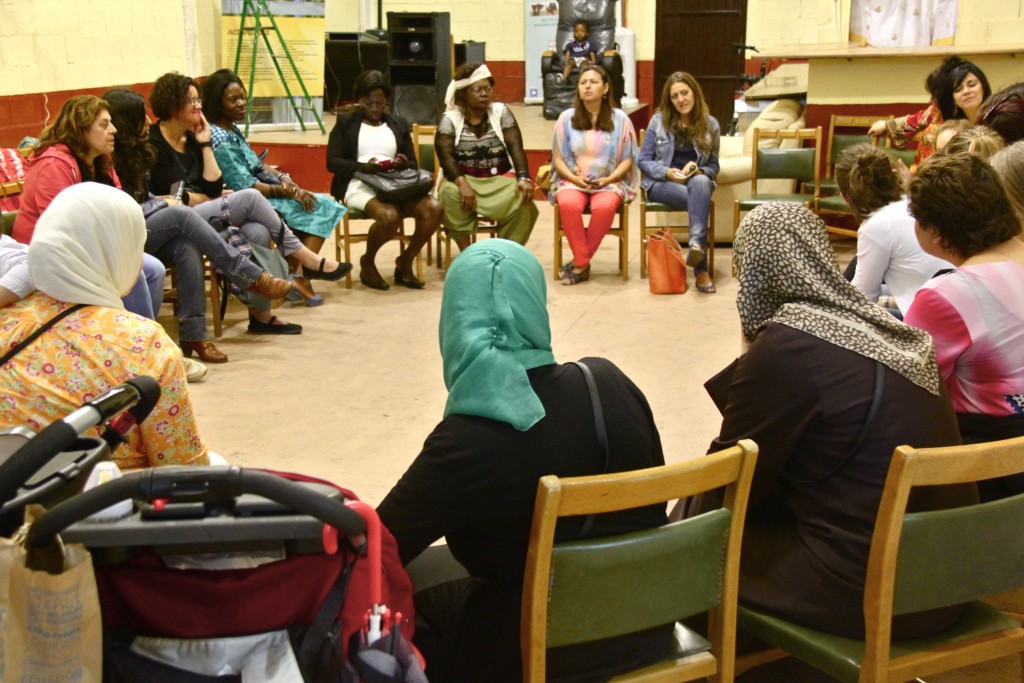 Different backgrounds, different experiences, different ages, different approaches – all that in one circle!
Different backgrounds, different experiences, different ages, different approaches – all that in one circle!
The introductions were followed by interesting discussions and questions concerning theintegration of migrant women into the society in Madrid. At some point, Augustine interrupted to bring the discussion to a end because the actual reason why they met was to have breakfast, have interesting exchanges of experiences and fun!
We than got to experience a great international breakfast with them. Everyone had brought some traditional food from their country. From salty to sweet, from hot to cold, there was nothing missing and Augustine made sure that everyone tried everything!

Right after the delicious breakfast, everyone started talking, dancing, trying on the colourful dresses and taking a lot of pictures. No doubt that everyone was enjoying it.
For us, on the one hand, it was an impressive experience to talk to migrant women and listen to their stories. On the other hand, it was great to see how they interact, share, exchange personal opinions, build networks and enjoy such great events.
Overall, this event was all about bringing people with different backgrounds and approaches but the same goal “to integrate migrant women into Madrid’s society”, together. Augustine, with her open and loving character was the one, who made this possible.
Thank you, for letting us being part of it!
Written by L.A.N.A
Communicating CSR for reputation
What we are and what we are seen to be.(what we seem to be) Reputation is just a perception of us. And the more opinions – the more influencers. The way it works is as simple as this:
From appreciation and trust to hatred and doubts. The influence of reputation is undisputable. Though intangible, it increases business profits, promotes growth and minimizes risks in crisis situations.
 According to the world’s largest reputation study RepTrak, aspects related to corporate responsibility (CSR) (citizenship, governance and workplace) form 41% of all dimensions that are proved to influence reputation of any company.
According to the world’s largest reputation study RepTrak, aspects related to corporate responsibility (CSR) (citizenship, governance and workplace) form 41% of all dimensions that are proved to influence reputation of any company.
But today companies are focusing their CSR on reporting and are leaving communication of such reports and other CSR activities unregulated which brings CSR communication to be in most cases unattended at all. And here is the common disappointment that after all the hard work a company’s CSR report is kept on the shelf and is barely read by its stakeholders.
But how to make reputation work in your favor? How to use your commitments in CSR properly? Are company’s activities that are key for good reputation?
In our Final Project on “CSR communication for Reputation” we aim to show that having good performance, even in all the three (social, economical and environmental) pillars, is not yet enough to ensure that your company is well perceived. We will open up the idea that only performance that is well communicated to company’s stakeholders has high and aspired influence on their opinion about the company.
In society a company is what it is perceived to be. And this is why our Final Project is about how to communicate your CSR commitments in order to increase your reputation. We feel that there is much more companies can say about their performance. There is much more we don’t yet know. And we think it is time to speak out loud about who you are.
Follow our posts and consult the final material on “CSR communication for Reputation” in order to better perception about your company. Start communicating today by sharing this post. The floor is yours!
CSR in SME’s of Curaçao (part 1): Curaçao Ecocity Projects- Curaloe®
How to write a post without sounding like a disguised marketing blable….I’ll be honest about it. I’m not being paid to write anything about the companies I’m going to write about, starting as of today. It has to do with my sense of pride, pride I feel for having great things resulting from such a small island in the Caribbean. The island of Curaçao.
Before getting deeper into the area of Sustainability and Corporate (Social) Responsibility, CSR, (…social between brackets because I believe this word might be misleading in this context. But that will be another post….), I had the idea that CSR was all about the social aspects. These aspects are important of course but they are just a fraction of all there is possible in the area I’m talking about. The quarter fell, (literally translated from a Dutch saying) when I started reading more about the subject, when helping the company I was working at, to engage more into CSR. To my surprise I discovered CSR was way more than we had thought it was up to that time. As a subject of my master (I left my job, sold everything I owned and moved to Madrid to get my masters degree on Sustainability and CSR), we studied how SME’s can put CSR into practice. When taking a closer look I discovered there are so many companies in Curaçao that actually are “Corporate Socially Responsible”.
As Daniel Truran perfectly explains there are 6 stakeholders that can drive SME’s to engage into CSR practices. In other words stakeholders that make CSR happen in an SME are: Shareholders, employees, environment, communities, suppliers and customers.
To start, let’s analyse which of these stakeholders act as CSR drivers for CurAloe:
Key Success factors of Curaçao Ecocity Projects
Implementation of CSR through Curaloe®
For the past ten years, Curaçao Ecocity Projects has been producing Curaloe®, organic products made of raw Aloe Vera, in the form of facial, shower and body products, insect repellants and a health drink. About 90% of its products are exported, which is a positive development for the island. Currently, Curaloe®products are exported to Aruba, Bonaire, Saint Martin, Suriname, The Netherlands, Germany, Sweden, Austria, Italy, Spain and Dominican Republic. Prospect export countries are among others Canada, U.S.A., Colombia, Slovenia and Romania. It would be no surprise to see Curaloe® as a recognised brand for organic Aloe Vera products worldwide in a few years.
Prospect export countries are among others Canada, U.S.A., Colombia, Slovenia and Romania. It would be no surprise to see Curaloe® as a recognised brand for organic Aloe Vera products worldwide in a few years.
Main CSR Drivers
I consider Curaçao Ecocity as one of the pioneer contributors to sustainable development in the community of Curaçao. I know there are more, so please read about these in my next posts. One of its main drivers to implement CSR into their business is mainly the environment.
They do this as follows:
- Electricity generation: By installing solar panels on the rooftops of their plants, they are saving up to 50% on electricity costs and thus have less negative consequences for the environment.
- Waste Reduction: Recently Ecocity introduced refillable dispensers in local hotel room bathrooms. This way, individual shower and body care bottles are eliminated which means less waste. Remnants of the unused aloe plant during production or in plantation maintenance, are turned into compost and reused.
- Watering system: The Aloe Vera plant grows well with little water. The water that is needed, usually comes from natural rainwater and also recycled water from a local wastewater treatment plant.
- Testing: None of the products is tested on animals.
- Ingredients: All products are made with 100% natural ingredients.
- Fertilizers: No synthetic fertilizers are used and pesticides, herbicides and germicides are strictly forbidden.
- Packaging: The bottles that are used are PET, which is an environmentally friendly packaging option, since the production and transport causes less environmental footprint and greenhouse gas emissions.
This fits into Curaçao Ecocity’s so called “green philosophy”, which entails:
“G.A.P. (good Agriculture Practices), designed and implemented throughout the production processes to minimize harmful environmental impacts….and to ensure a responsible approach to worker health and safety” (www.ecocityprojects.com).
The second driver for implementing CSR practices into their business is highlighted in their Green Philosophy: the employee.
 Currently there are 28 workers with a permanent contract. For Ecocity, good working conditions, happiness and wellbeing of its employees is key. Ecocity recognises that its workforce is one of their greatest strengths and is committed to making their working experience a truly meaningful and beneficial one. They do this by:
Currently there are 28 workers with a permanent contract. For Ecocity, good working conditions, happiness and wellbeing of its employees is key. Ecocity recognises that its workforce is one of their greatest strengths and is committed to making their working experience a truly meaningful and beneficial one. They do this by:
- Housing: The plantation workers are offered a well-equipped place to live on the premises of the plantation, if needed.
- Wages: The lowest salaries are more than 35% above the local minimum wage.
- Vacation days: The vacation days are above average compared to other local manufacturing companies.
- Pension: Ecocity is working on offering its workers a decent pension plan. This is not considered as an automatic fact in all companies on the island.
- Intermediary: If needed, the company will play an intermediary role in the workers private affairs (for example in financial matters, mortgage, car loan etc).
Ecocity considers to implement more employee related CSR practices in the future. Some of which might be for example contracting workers with a handicap or focusing on training programs for school drop outs. The possibilities have to be studied.
With the introduction of an attractive, fresh, modern and ecofriendly package, Curaloe® is a must-buy Caribbean-made gift item. This promises to win public approval and create a love- emotional engagement with customers.
A less developed driver is the community. Up to now Ecocity has not had enough financial resources to put in place more community based CSR practices. Ways of engaging with communities is being studied. Sponsoring community activities with Aloe drink is part of current efforts.
In conclusion:
Curaçao Ecocity Projects has achieved mentioned results in just 10 years. It is now being profitable and aims to increase its CSR practices in the years to come. There are still many areas of growth. The Curaloe® product is worth highlighting because on a small island, where CSR is mostly interpreted only as Philanthropy, this company has made important impacts, and aims to become a leading company on the island in terms of CSR good-practices.
Stay tuned for my next posts on the CSR practices of SME’s in Curaçao.
Sources:
Daniel Truran
www.curaloe.com
www.ecocityprojects.com
Interview with commercial manager Remco Ernandes


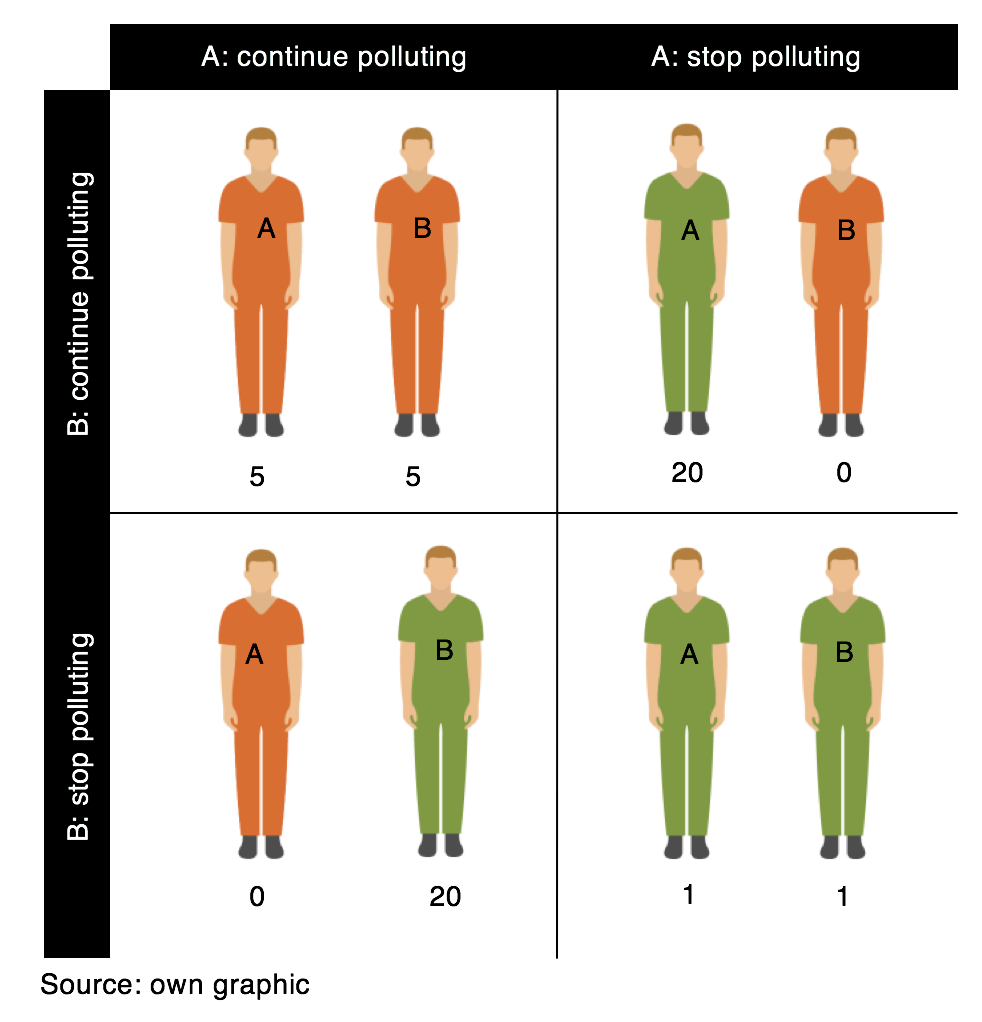
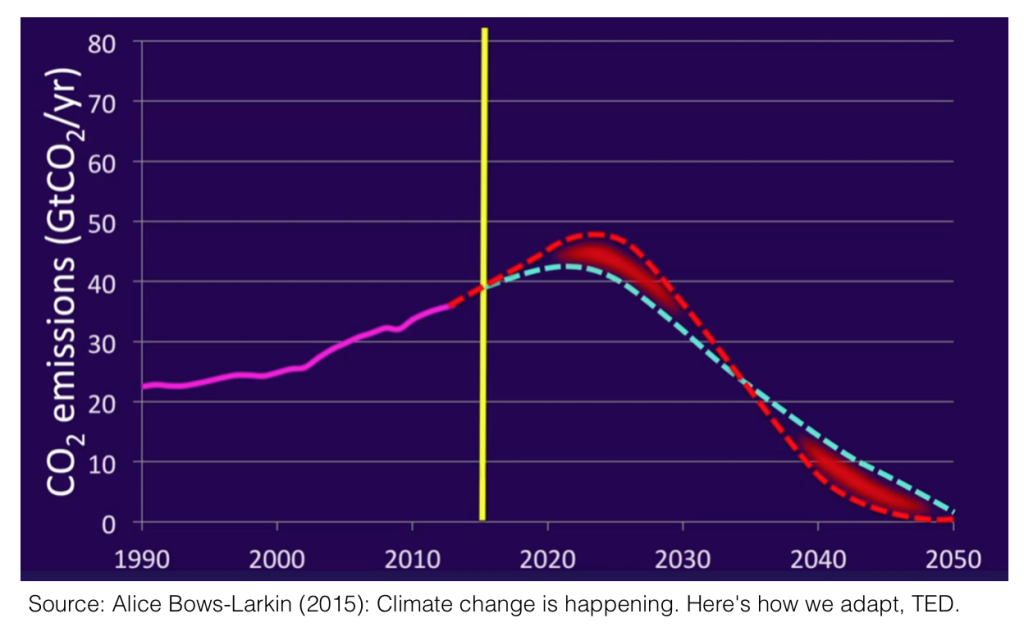
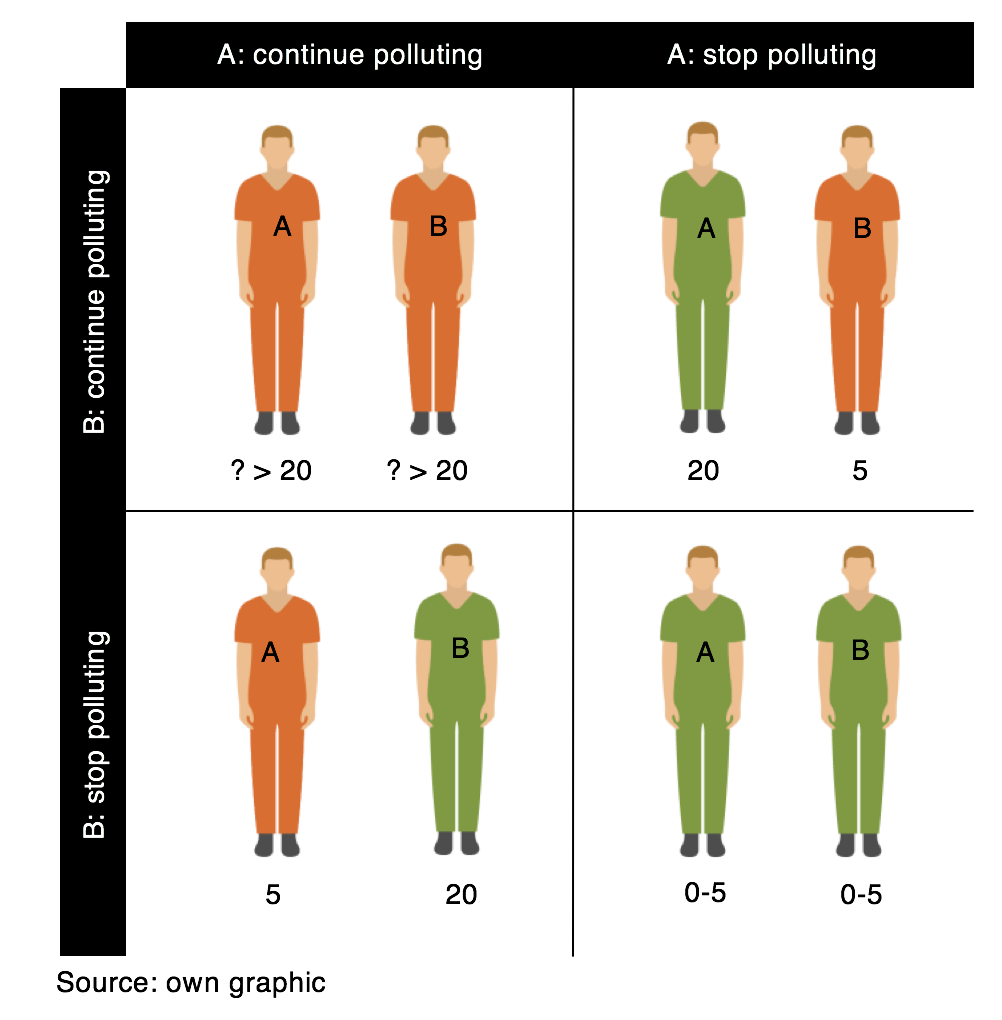

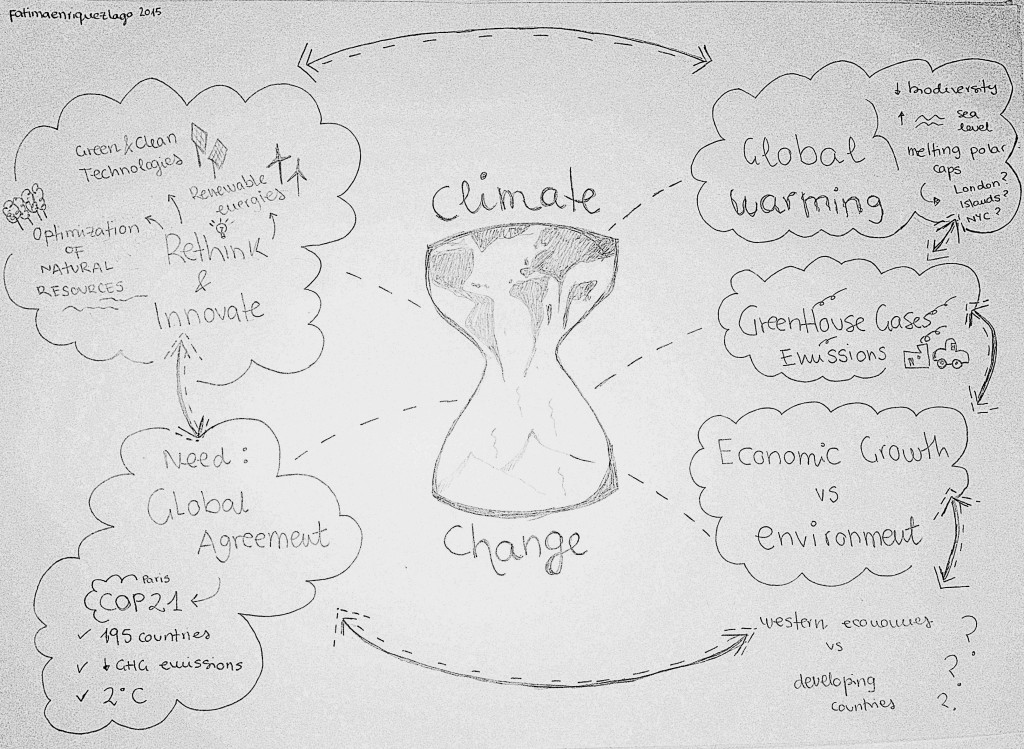
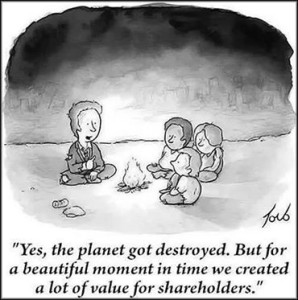
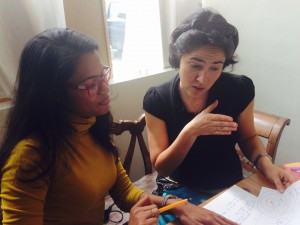



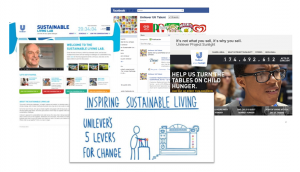
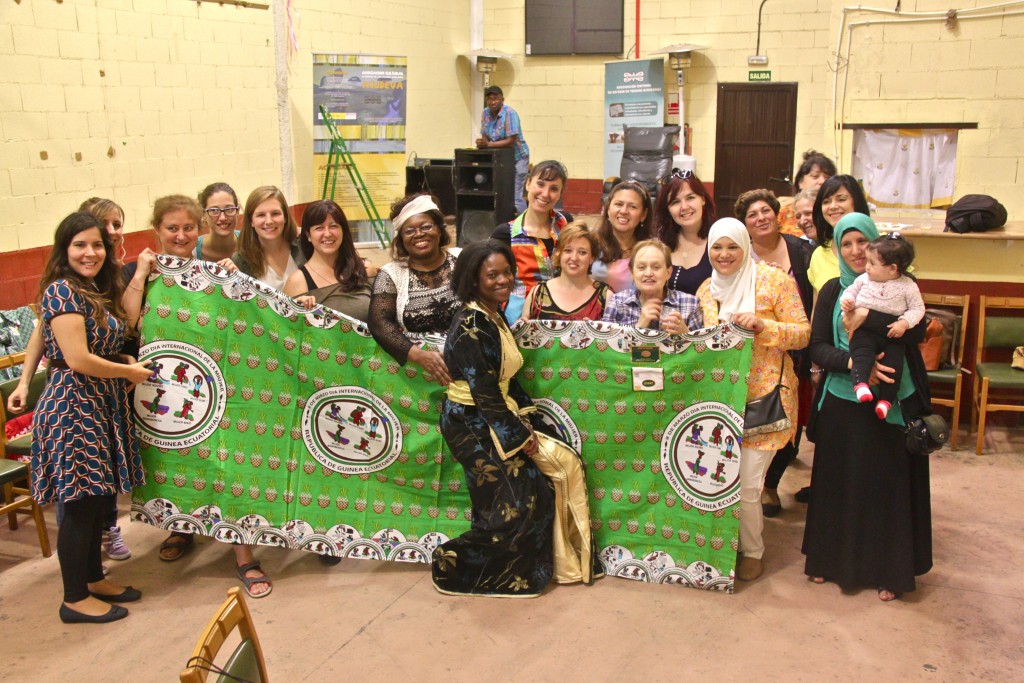




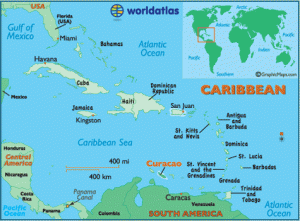
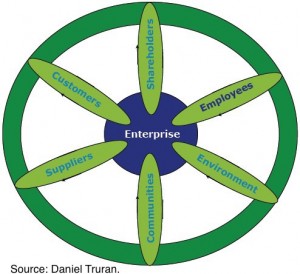


.png)
].gif)
.png)
].png)
].png)
].png)
.png)
].png)
.png)
